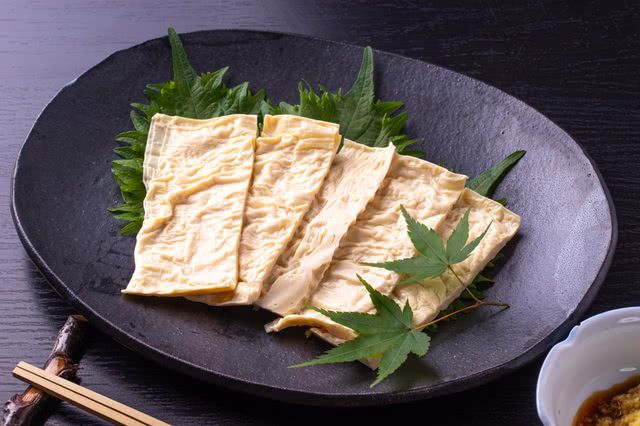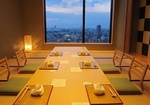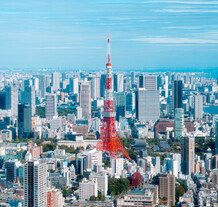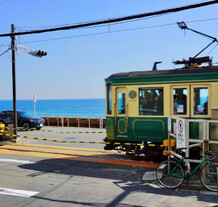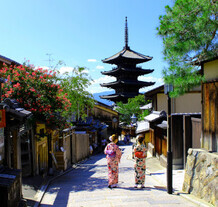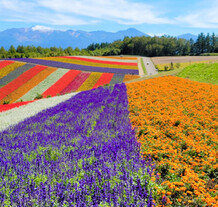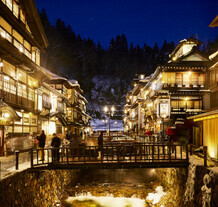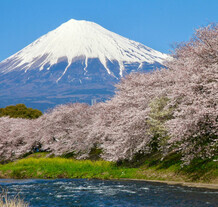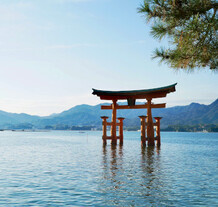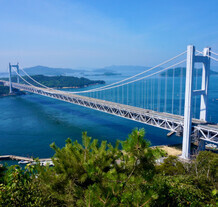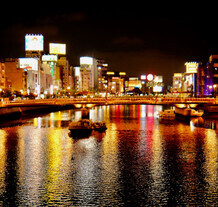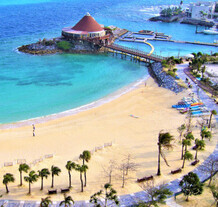Tofu skin, called yuba in Japanese, is a Kyoto specialty that is enjoying worldwide popularity owing to its high nutritional content. This article will introduce you to yuba, including its history, ingredients, recipe, and nutritional value, and recommend two Kyoto restaurants famous for their delicious yuba dishes!
What Is Yuba?
Yuba is the name for Japanese tofu skin, which is a Kyoto delicacy. Like tea, it's believed that it was introduced to Japan from China by a Zen monk in the 13th century. During the Kamakura Period (1185-1333), it was cherished by Buddhist monks in the Kyoto region as part of the vegetarian cuisine served at Zen temples, which was called shojin ryori. Yuba spread beyond temples over the Edo Period (1603-1868), and has since become a common ingredient in Japanese cooking. Yuba continues to be an integral part of shojin ryori and kaiseki ryori (traditional multi-course haute cuisine), and it is indispensable to Kyoto's food culture.
Recommended for Vegetarians! What Is Yuba Made From?
The sole ingredients in yuba are soybeans and water. Despite its simplicity, yuba is packed with a remarkable balance of high-quality plant-based protein, vitamin B, minerals like calcium, potassium, and magnesium, and dietary fiber. As such, yuba is gaining attention among the health-conscious worldwide, particularly vegans and vegetarians.
How Is Yuba Made?
Yuba is made by soaking soybeans in water overnight and then drying them in a colander to make them puff up. These soybeans are then ground together with water and cooked, with the resulting mash strained to separate the soy milk (liquid) from the okara (dregs). The soy milk is then thickened with low heat in rectangular pans, which creates a thin film of solidified protein on the surface where the milk touches the air. This film is gently pulled off and drained to make yuba.
The flavor and aroma of yuba change depending on when it is pulled from the pan. The first layer to be pulled off is considered the best quality.
![What Is Yuba? The History and Method Behind Japanese Tofu Skin, and Where to Try It in Kyoto]()
Owing to its light and simple flavor, yuba goes well with a variety of different foods, including sashimi, stews, salads, soups, and deep-fried dishes.
Yuba is particularly famous in Kyoto, thanks to its high-quality water. As yuba is made solely from soybeans and water, a steady supply of pristine water is essential. The Kyoto Basin is surrounded by grand mountains with an abundance of clean underground water, making it well-suited to producing yuba.
Recommended Restaurants in Kyoto to Enjoy Yuba Dishes
Yuba is a wonderfully nutritious food packed with the umami flavors of soybeans. Below are two recommended restaurants in Kyoto known for serving delicious yuba in a variety of dishes. As they are popular, be sure to make a reservation in advance.
Yuba Higashiyamayuuzu (Gion-shijo / Japanese)
This restaurant is run by wholesale hotel and restaurant yuba supplier Kyo Miyama Yubayuuzu. Its yuba is produced in the nature-rich Miyama area of northern Kyoto Prefecture, and the entire process is kept in-house, including growing the soybeans.
Yuba Higashiyamayuuzu serves seasonal and creative Western and Japanese dishes such as [Miyama Kyo Jidori] chicken, known for its firm texture and umami flavors; [Soy Milk Hotpot] with Kyoto vegetables; and [Dried Bean Curd Meal], which boasts soy sauce-marinated egg yolk from free-range chickens. The use of additive-free soybeans flaunts the rich flavor and aroma of yuba to the fullest extent.
The restaurant has counter seats, tables, and private rooms, and is decorated in an elegant style befitting the iconic Higashiyama area of Kyoto, promising the perfect setting for a relaxing meal with someone special.
Yuba Higashiyamayuuzu
Open:
[Fridays-Sundays] Lunch 11:00 pm - 3:00 pm (L.O. 2:00 pm) / Dinner 5:30 pm - 9:30 pm (L.O. 8:30 pm)Closed:
Monday, Tuesday, Wednesday, ThursdayAverage price:
[Dinner] 5,000 JPY / [Lunch] 2,000 JPYAccess:
7 minute walk from Gion Shijo station on the Keihan main line.Address:
570-218 Gionmachiminamigawa, Higashiyama-ku, Kyoto, Kyoto MapMore Details Reservation
Kyo Yubadokoro Seike Nijojo Branch (Nijojo-mae / Japanese)
Kyo Yubadokoro Seike Nijojo Branch is located a short walking distance from Nijo Castle, a World Heritage Site. The restaurant serves high-quality yuba made with 100% Japanese soybeans from the first layer that forms on the soymilk.
The [Full Tofu Skin Course] allows diners to enjoy yuba in a variety of different ways, including indulging in umami-rich first-layer yuba, along with sashimi, vegetables grilled on a ceramic plate, and yuba soy milk pudding. You can also opt for a vegetarian course by letting the restaurant know when making a reservation.
The restaurant has a serene atmosphere, great for dates or to treat a special guest. There are just nine seats at the counter, so be sure to make reservations and secure yourself a cozy and luxurious dinner.
Kyo Yubadokoro Seike Nijojo Branch
Open:
[Monday, Wednesday-Sunday, National Holidays, Day before National Holidays] Lunch 11:30 am - 2:30 pm (L.O. 2:30 pm) [Thursday-Sunday, National Holidays, Day before National Holidays] Dinner 5:00 pm - 9:30 pm (L.O. 7:30 pm)Closed:
TuesdayAverage price:
[Dinner] 10,000 JPY / [Lunch] 5,000 JPYAccess:
1 minute walk from Exit 3 of Subway Nijojo-mae Station. (Nearest bus stop: Nijojo-mae city bus stop)Address:
233-4, Daimonjicho, Nakagyo-ku, Kyoto-shi, Kyoto MapMore Details Reservation
Now that you’ve been introduced to yuba, your appreciation for this healthy superfood has no doubt doubled! If you’re traveling to Kyoto, be sure to savor the wonderful flavors of yuba at one of the city’s many fantastic restaurants.
Disclaimer: All information is accurate at time of publication.

